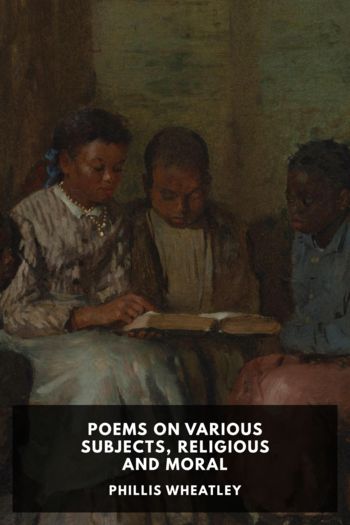Malaria and Rome: A History of Malaria in Ancient Italy, Robert Sallares [reading a book TXT] 📗

- Author: Robert Sallares
Book online «Malaria and Rome: A History of Malaria in Ancient Italy, Robert Sallares [reading a book TXT] 📗». Author Robert Sallares
¹⁴⁴ Brabin et al. (1990); Riley et al. (2001) surveyed the possibilities.
166
Demography of malaria
than those predicted by the Coale–Demeny model life-tables for the prevailing levels of infant mortality:
Viewed in terms of the Princeton North or West model life-tables adult mortality was far too high relative to rates in infancy and childhood in the seventeenth century. If the only information available were the adult rates, and one were to extrapolate from them to estimates of expectation of life as a whole, using the Princeton tables, the result would be a radical underestimate of expectation of life at birth.¹⁴⁵
Nevertheless it must be remembered that mortality as a whole was lower in non-marsh parishes in England than in the marsh parishes ravaged by P. vivax. Malaria was the most powerful cause of these atypical patterns—atypical by modern, but not necessarily by pre-modern, standards. In the pre-modern world infectious diseases were vastly more important than they are today. The Coale–Demeny life-tables, which assume that decreasing levels of life expectancy at birth can be explained above all in terms of increasing levels of infant mortality, fail to pay enough attention to additional adult mortality caused by infectious diseases in historical populations. Similar patterns of excess adult mortality relative to infant mortality have also been observed in the historical demography of India. It has been suggested that tuberculosis was the most important cause of the atypicality in India, but malaria (especially P. vivax) has been very important historically in many parts of India.
Learmonth noted the striking correlations in Bengal until recently between, first, areas with intense malaria and areas with static or decreasing populations, and, secondly, districts with little or no malaria and districts with growing human populations. Malaria undoubtedly interacted with tuberculosis in India.¹⁴⁶ These atypical mortality patterns have had a wide geographical spread in recent times: England, Italy, India, and East Asia. It is a reasonable ¹⁴⁵ Wrigley et al. (1997: 349, cf. 261–3, 284–5).
¹⁴⁶ Mari Bhat (1989) on Indian demography, and Learmonth (1988: esp. 5–7, 206–7) on malaria in India. Even if the Sanskrit texts mentioned in Chapter 3 above do not definitely associate malaria with mosquitoes, other Sanskrit texts do describe malaria itself (a demon called takmán frequently found on lowlying land) very clearly, differentiating quotidian, tertian and quartan fevers: Zysk (1985: 34–44); Raina (1991: 1–4). Hirsch (1883: 204–7) described the distribution of malaria in India in the nineteenth century, and Klein (1972) its devastating effects in Bengal. Mari Bhat (1989: 110–11) also suggested, using the Barclay data, that the age-structure of mortality of traditional Chinese populations diverged from the model life-tables even more than that of Indian populations did, extending the patterns under discussion here even further.
Demography of malaria
167
hypothesis that they also have a long history. The balance of probability is that human populations that were affected by malaria in Latium and Tuscany in antiquity also shared these atypical patterns with high infant mortality but even higher adult mortality.
Modern quantitative knowledge of the extreme effects of malaria on human demography indicates that Toscanelli was right to suggest in 1927 that the spread of malaria from c.300 onwards did play a major role in the decline of the southern and coastal Etruscan cities, in exactly the same way that malaria led to the depopulation of the Pontine Marshes. From a methodological viewpoint, the conclusions reached here suggest that it is a mistake for ancient historians to assume that the model life-tables necessarily encompass the entire range of possibilities as far as the demography of human populations in antiquity is concerned.¹⁴⁷ It is now time to investigate the operation of some of the general principles which have been discussed so far in detail at the local level in the various environments of western central Italy. Let us start with the most notorious focus in Latium, the Pontine Marshes.
¹⁴⁷ The fact that extrapolations from data for adult mortality in historical populations often yield underestimates of life expectancy at birth is relevant not only to Roman demography, but also to the demography of classical Athens. Although this cannot be explored in detail here, it is worth noting in passing that the ratio between the ephebes and the arbitra-tors in Athens in the fourth century (a measure of adult mortality), which has often been used to yield very low estimates of life expectancy at birth following comparisons with model life tables, probably underestimates e0, in the light of the present discussion. This provides further support for the view advocated by Sallares (1991: 113–14) that life expectancy at birth in classical Athens has been underestimated. If infant and juvenile age-groups were in fact healthier in





Comments (0)